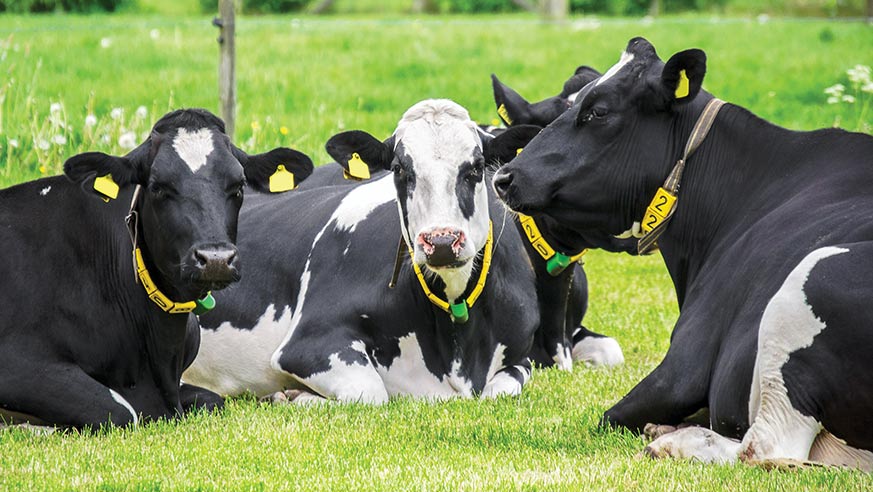6 welfare goals identified in new dairy strategy
 © Eshana Blue/Adobe Stock
© Eshana Blue/Adobe Stock A five-year strategy to help demonstrate progress in cow welfare has been launched by the UK dairy industry.
The UK Dairy Cattle Welfare Strategy has been created by dairy farmers, vets and industry professionals across the supply chain via the independent, industry-based network Ruminant Health and Welfare (RH&W).
RH&W vice-chairman and dairy farmer Gwyn Jones, launching the strategy, said: “The industry’s shared vision is for the UK dairy industry to demonstrate evidence-based progress in six key areas of cattle welfare by 2028.
See also: How enrichment could help cow welfare and public perception of dairy
“Ability to provide evidence of progress will assist in maintaining UK status as a global leader in dairy cattle welfare, helping us compete with our international players,” he added.
The six goals are:
- Thriving cows Ensuring all dairy animals are bred, reared and cared for to be robust and thrive, irrespective of the management system.
- Appropriately nourished cows Maintaining good, healthy body condition throughout the year and at all stages of lactation.
- Positive welfare Providing an environment that allows all dairy cows to exhibit normal behaviours, such as play or curiosity, through appropriate enrichment.
- Comfortable cows Maximising comfort in housing and at pasture.
- Healthy feet Ensuring a proactive lameness management plan is in place on every UK dairy farm to optimise foot health.
- Healthy udders Continuing improvements to further reduce mastitis, which represents a significant cost in terms of lost production, treatment and replacement costs.
Wide support
The new strategy has the support of more than 50 organisations across the four nations of the UK, including the chief veterinary officers.
It builds on the work of the first dairy cattle welfare strategy launched by the NFU in 2010 and continued by the Cattle Health and Welfare Group for the following10 years.
AHDB senior health and welfare scientist and RH&W steering group member Dr Jenny Gibbons said: “This is an extraordinary opportunity to make a difference for dairy cattle welfare where everyone can contribute, and the entire industry can benefit.
“The UK dairy industry has enjoyed a positive reputation for animal welfare for many years.
“However, in rapidly evolving global markets, we must keep pace with our competitors – especially those exporting countries who are now tackling reputation and welfare challenges and beginning to establish their own welfare strategies and visions.
“For decades, the UK has been at the forefront of animal welfare and it is essential that we remain there.”
Data collection
The aim is to gather evidence by collating data that already exists across the industry, rather than create another data hub, to “tell the story of our dairy cattle”, said Jenny.
She gave the example of the annual breeding company survey, which captures semen sales.
Here, data had tracked sexed semen trends over the past 11 years, giving an evidence base when it came to challenging topics around bull calves, she explained.
“We want to challenge ourselves to take that example and extrapolate it across other priority areas,” she added.
How to get involved
The next step is to engage those who have signed up to support the strategy and help shape the delivery plan.
Anyone who has not yet signed up and would like to get involved can send an email or visit the Ruminant Health and Welfare website for further information.
Ruminant Health and Welfare will be holding stakeholder engagement workshops to gather feedback to put together a solid delivery plan.
A process will be set up to collate evidence and information, so progress can be reported in an annual update.
Other ruminants
The dairy welfare strategy is part of a wider body of work at RH&W to facilitate and create welfare strategies for the whole UK ruminant sector.
Similar strategies for sheep and beef – including dairy beef – are expected to follow within the next six to 12 months.
